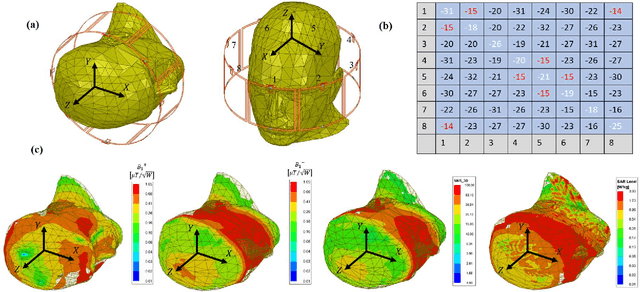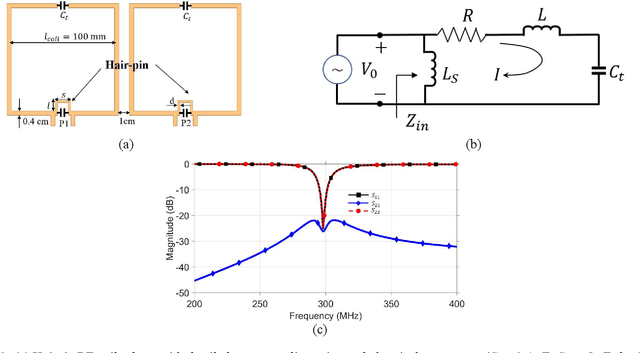Hairpin RF Resonators for Transceiver Arrays with High Inter-channel Isolation and B1 Efficiency at Ultrahigh Field 7T MR Imaging
Paper and Code
Jan 21, 2022



Sufficient electromagnetic decoupling among resonant elements in RF array coils is required to maintain the integrity of the magnetic flux density map from individual channel at ultra-high field magnetic resonance imaging. A close-fitting or high-density transceiver array for augmented performance in parallel imaging and imaging quality, leads to strong coupling between elements of the array making the decoupling a very challenging task at ultra-high fields. High impedance RF coils have demonstrated to be a prominent design method to circumvent these coupling issues. However, inherent characteristics of these coils have ramification on the B1 field efficiency and SNR or the complexity of the design. In this work, we propose a hairpin RF coil, a simple design based on high impedance technique that provides excellent decoupling performance and superior RF magnetic field efficiency compared to the current state high impedance coils. In order to validate the feasibility of the proposed hairpin RF coils, systematical studies on decoupling performance, field distribution, and SNR are performed, and the results are compared with those obtained from one high impedance RF coil namely self-decoupled RF coil. To investigate the proposed hairpin RF coil design, a 7T 8-channel head coil array using hairpin resonators is built and evaluated. The MR imaging results in a cylindrical phantom obtained from the 8-channel array demonstrated a 13 % increase in SNR field intensity of the hairpin design compared to the self-decoupled coils at 7T under the same circumstance. Furthermore, the characteristics of the hairpin RF coils are evaluated using a more realistic human head voxel model in ANSYS HFSS.
 Add to Chrome
Add to Chrome Add to Firefox
Add to Firefox Add to Edge
Add to Edge